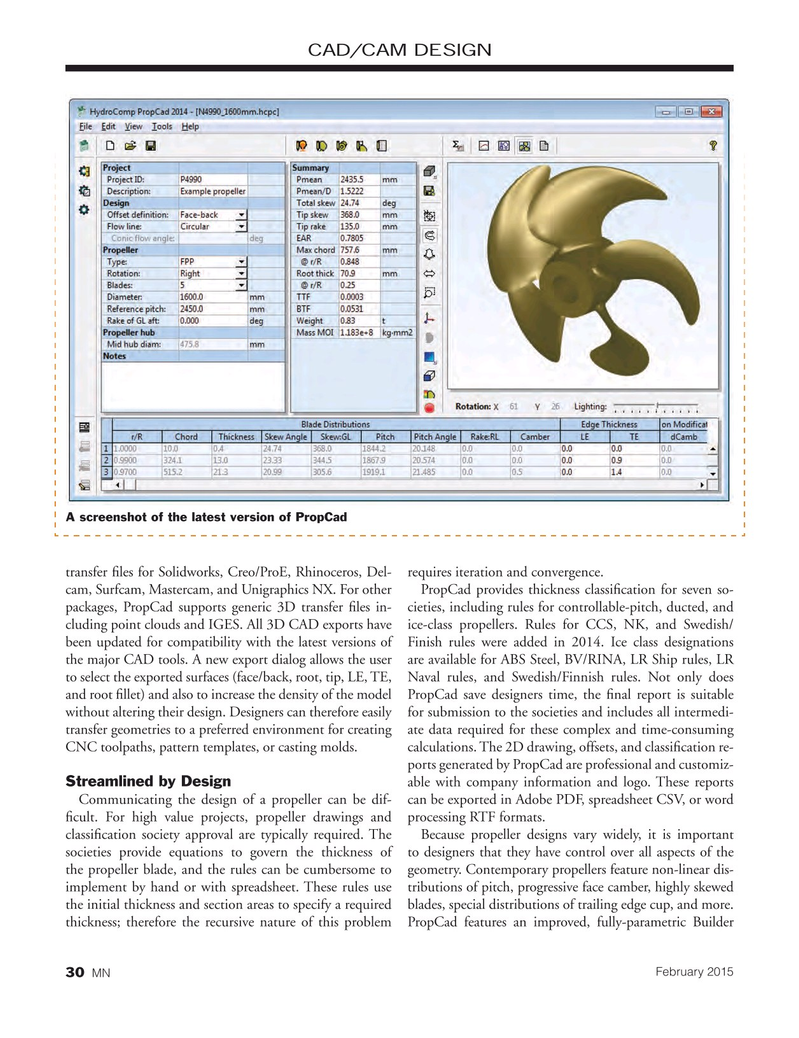
Page 30: of Marine News Magazine (February 2015)
Dredging & Marine Construction
Read this page in Pdf, Flash or Html5 edition of February 2015 Marine News Magazine
CAD/CAM DESIGN
A screenshot of the latest version of PropCad transfer ? les for Solidworks, Creo/ProE, Rhinoceros, Del- requires iteration and convergence. cam, Surfcam, Mastercam, and Unigraphics NX. For other PropCad provides thickness classi? cation for seven so- packages, PropCad supports generic 3D transfer ? les in- cieties, including rules for controllable-pitch, ducted, and cluding point clouds and IGES. All 3D CAD exports have ice-class propellers. Rules for CCS, NK, and Swedish/ been updated for compatibility with the latest versions of Finish rules were added in 2014. Ice class designations the major CAD tools. A new export dialog allows the user are available for ABS Steel, BV/RINA, LR Ship rules, LR to select the exported surfaces (face/back, root, tip, LE, TE, Naval rules, and Swedish/Finnish rules. Not only does and root ? llet) and also to increase the density of the model PropCad save designers time, the ? nal report is suitable without altering their design. Designers can therefore easily for submission to the societies and includes all intermedi- transfer geometries to a preferred environment for creating ate data required for these complex and time-consuming
CNC toolpaths, pattern templates, or casting molds. calculations. The 2D drawing, offsets, and classi? cation re- ports generated by PropCad are professional and customiz-
Streamlined by Design able with company information and logo. These reports
Communicating the design of a propeller can be dif- can be exported in Adobe PDF, spreadsheet CSV, or word ? cult. For high value projects, propeller drawings and processing RTF formats.
classi? cation society approval are typically required. The Because propeller designs vary widely, it is important societies provide equations to govern the thickness of to designers that they have control over all aspects of the the propeller blade, and the rules can be cumbersome to geometry. Contemporary propellers feature non-linear dis- implement by hand or with spreadsheet. These rules use tributions of pitch, progressive face camber, highly skewed the initial thickness and section areas to specify a required blades, special distributions of trailing edge cup, and more. thickness; therefore the recursive nature of this problem PropCad features an improved, fully-parametric Builder
February 2015
MN 30

 29
29

 31
31
